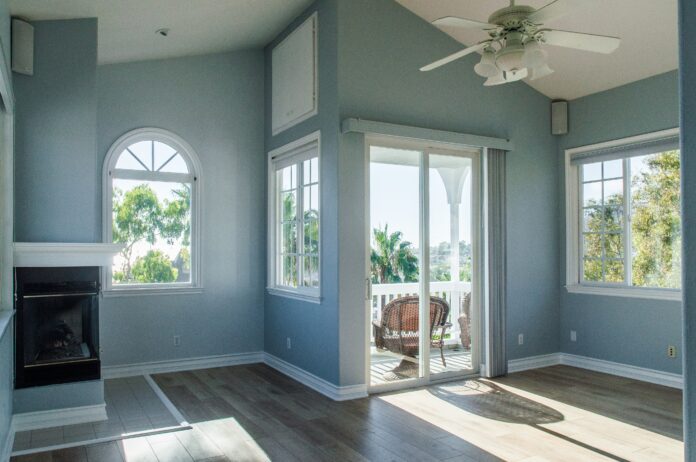Introduction
Incorporating room addition natural light is essential for creating a bright, inviting, and energy-efficient space. Whether you’re planning a new sunroom, bedroom, or living area, thoughtful lighting design can transform your addition into a vibrant part of your home. Simple strategies like choosing the right room orientation, using skylights, or adding windows to the room can flood your space with sunlight. This guide offers practical home addition lighting tips to enhance natural light, improve aesthetics, and boost functionality, ensuring your new room feels open and welcoming throughout the day.
Natural light is essential for fostering a bright, inviting atmosphere while enhancing energy efficiency in your home. When planning a room addition, incorporating strategies to maximize sunlight can enhance the space’s comfort, aesthetics, and functionality. Whether it’s through well-placed windows, skylights, or reflective materials, there are many ways to infuse your room addition with natural light. This guide explores effective design tips to help you create a light-filled addition that elevates your home’s atmosphere.
Enhancing Room Addition Natural Light for a Brighter Space

Maximizing a room’s additional natural light is a key factor in designing a functional and welcoming space. Start by choosing the right room orientation based on sunlight patterns. South-facing additions are ideal for capturing sunlight throughout the day, while east-facing rooms benefit from refreshing morning light.
Incorporating large windows is another effective way to bring in natural light. Floor-to-ceiling windows, bay windows, or panoramic designs can flood your space with sunlight and provide stunning outdoor views. Skylights and roof windows are excellent additions for overhead lighting, especially in areas with limited wall space.
To enhance the light, use reflective materials like light-colored walls, glossy finishes, and polished flooring. These elements bounce sunlight across the room, creating a brighter ambiance. Finally, keep furniture low-profile and avoid blocking windows to ensure unobstructed light flow, making your room addition feel open and airy.
Benefits of Maximizing Natural Light in Your Room Addition
Enhanced Aesthetic Appeal
Natural light has the power to transform a room, making it feel larger, brighter, and more inviting. Well-lit spaces create a seamless connection with the outdoors, enhancing the overall ambiance and aesthetic appeal.
Health Benefits
Exposure to natural light improves mood, boosts productivity, and supports better sleep patterns. Incorporating sunlight into your room addition creates a healthier environment for your family.
Energy Efficiency
Maximizing natural light reduces the need for artificial lighting, lowering energy consumption and utility bills. This sustainable approach benefits both the environment and your wallet.
Design Strategies for Maximizing Natural Light
Choosing the Right Location
The placement of your room addition is crucial. Consider the orientation of the sun:
- East-facing rooms get morning light, perfect for kitchens or breakfast areas.
- South-facing rooms receive sunlight throughout the day, ideal for living spaces.
- West-facing rooms are bathed in afternoon and evening light, great for dining rooms.
Incorporating Large Windows
Large windows, such as floor-to-ceiling or panoramic designs, are a cornerstone of natural light optimization. They offer unobstructed views and flood the room with sunlight.
Using Skylights and Roof Windows
Skylights provide a direct source of overhead light, especially useful in spaces where wall windows are limited. Roof windows can also enhance ventilation and reduce dependency on artificial cooling.
Opting for Glass Doors
Sliding glass or French doors connect indoor and outdoor spaces while letting in ample light. They are perfect for sunrooms, patios, or garden-facing rooms.
Open Floor Plans
Minimizing walls and partitions allows light to travel freely across connected spaces, creating a brighter and more cohesive interior.
Using Materials to Enhance Natural Light
Light-Reflecting Surfaces
Materials with reflective properties amplify natural light. Consider glossy paint, mirrored decor, or light-colored walls to bounce sunlight around the room.
Glass Partitions
For privacy without sacrificing light, install glass partitions. Frosted or textured glass can diffuse sunlight while maintaining a sense of seclusion.
Flooring Choices
Opt for light-toned or polished flooring materials, such as hardwood with a glossy finish or light-colored tiles. Light-reflective surfaces enhance illumination, making the room feel brighter and more open.
Additional Tips for Maximizing Natural Light
Strategic Furniture Placement
Arrange furniture to keep windows unobstructed. Avoid placing tall or bulky items that block sunlight from entering the room.
Using Sheer Curtains
Sheer curtains allow natural light to filter in while maintaining privacy. Choose light, airy fabrics that complement your room’s decor.
Trim Outdoor Obstructions
Overgrown trees or shrubs outside windows can block sunlight. Regularly trim greenery to ensure your room addition benefits from unobstructed natural light.
Challenges and How to Overcome Them
Dealing with Glare
Excessive sunlight can cause glare, making spaces uncomfortable. Use UV-blocking window films, motorized blinds, or adjustable shades to control light levels.
Addressing Heat Gain
Rooms with large windows may experience overheating. Energy-efficient, double-paned windows or solar-control glass can mitigate heat while preserving light.
Privacy Concerns
For rooms facing busy streets or neighbors, opt for frosted glass or strategically placed windows to balance light and privacy.
Combining Natural and Artificial Light
Complementary Lighting Design
Combine natural and artificial lighting to achieve a harmonious and well-balanced ambiance in your space. Use layered lighting, such as recessed lights and wall sconces, to complement natural sources during the evening.
Smart Lighting Solutions
Install smart lighting systems that automatically adjust based on the amount of natural light entering the room. This ensures a seamless transition as the sun sets.
Conclusion
Maximizing natural light in your room addition enhances its aesthetic appeal, promotes better health, and increases energy efficiency. By carefully planning the room’s orientation, incorporating large windows and skylights, and using light-enhancing materials, you can create a bright and inviting space. Address challenges like glare or heat gain with practical solutions, and combine natural and artificial lighting for optimal results. With these design tips, your room addition will not only look stunning but also improve your quality of life.














